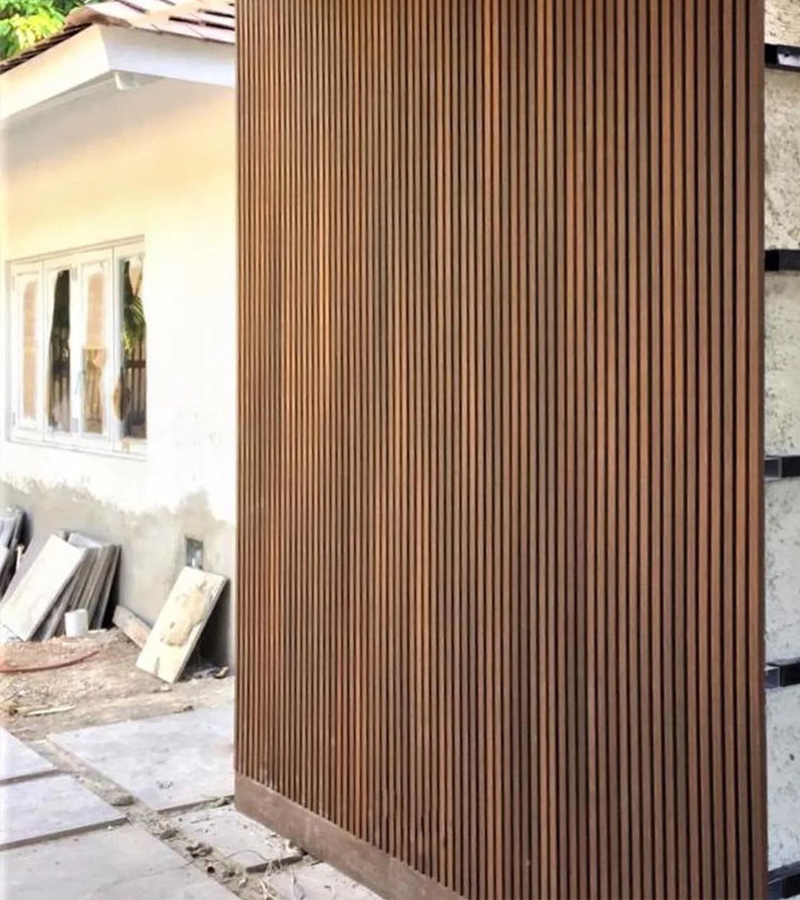What Are Slat Walls?
Slat walls are a popular wall feature that combines aesthetic appeal with functional design. Are Slat Walls Waterproof? Typically made from materials such as wood, MDF (medium-density fiberboard), or composite materials, slat walls are known for their horizontal grooves that allow for the installation of hooks, shelves, and other attachments. These versatile wall panels are commonly used in homes, offices, and commercial spaces to maximize storage and enhance visual appeal.
Are Slat Walls Waterproof?
One of the most common questions homeowners ask is, “Are slat walls waterproof?” The answer depends on the type of material used in the slat wall construction.
1. Wood-Based Slat Walls
Wood-based slat walls, including those made from MDF and natural wood, are generally not waterproof. Here’s why:
- Natural Wood: While beautiful and durable, untreated wood absorbs moisture, making it prone to warping, swelling, and rotting when exposed to water.
- MDF (Medium-Density Fiberboard): MDF is made from wood fibers and resin. While it’s cost-effective and easy to work with, it can swell and deteriorate when exposed to moisture without proper sealing.
Fact Check: To make wood-based slat walls more resistant to water, homeowners can apply waterproof sealants or choose panels with water-resistant coatings.
2. Composite and PVC Slat Walls
Composite and PVC-based slat walls are inherently more water-resistant compared to their wood counterparts.
- Composite Slat Walls: These are typically made from a blend of wood fibers and plastic, providing added resistance to moisture. They are a great option for damp areas like basements or laundry rooms.
- PVC Slat Walls: Made entirely from polyvinyl chloride, PVC slat walls are waterproof and perfect for spaces exposed to humidity, such as garages and outdoor areas.
Quick Tip: For homeowners seeking the most water-resistant option, PVC slat walls are the ideal choice.
How to Protect Your Slat Walls from Water Damage
If you’re using wood or MDF slat walls and want to safeguard them against water damage, consider these preventive measures:
Waterproof Sealants
Applying a waterproof sealant is one of the most effective ways to make wood-based slat walls more water-resistant.
- Types of Sealants:
- Polyurethane: Offers a durable, waterproof layer.
- Acrylic Sealants: Suitable for lighter protection and easy application.
- Application Process:
- Sand the surface of the slat wall to ensure smoothness.
- Apply the sealant evenly with a brush.
- Let it dry for the recommended time before adding additional coats.
Comparing Water Resistance: Wood vs. PVC Slat Walls
To help you understand the water resistance of different materials, here’s a quick comparison:
| Material Type | Water Resistance Level | Best Use Cases |
|---|---|---|
| Natural Wood | Low | Indoor, dry areas |
| MDF | Low to Medium (if sealed) | Indoor, low-moisture areas |
| Composite | Medium to High | Basements, laundry rooms |
| PVC | High | Garages, bathrooms, outdoor areas |
Conclusion: PVC and composite slat walls are more suitable for environments with higher moisture levels, while wood-based slat walls require additional treatment to improve their water resistance.
Key Benefits of Waterproof Slat Walls
Waterproof slat walls offer several advantages, making them an attractive option for homeowners and businesses alike:
- Durability: They are less likely to warp or rot over time, ensuring a longer lifespan.
- Easy Maintenance: Waterproof materials like PVC are easy to clean and maintain, simply requiring a damp cloth.
- Versatility: Suitable for a range of settings, from garages to outdoor spaces.
FAQs About Waterproof Slat Walls
1. Can I use slat walls in my bathroom?
Yes, but it’s best to use waterproof materials like PVC slat walls in high-moisture areas like bathrooms.
2. How do I maintain slat walls in damp environments?
Regularly clean the walls with a dry or slightly damp cloth. Ensure proper ventilation to reduce humidity.
3. Are waterproof slat walls more expensive?
Waterproof options such as PVC are generally more expensive than wood or MDF, but they offer better long-term value due to their durability.
4. Can I make my wood slat wall waterproof?
Yes, by applying waterproof sealants or finishes, you can enhance the water resistance of wood slat walls.
5. Are there stylish options for waterproof slat walls?
Yes, PVC and composite slat walls come in various finishes and colors, allowing you to achieve both functionality and aesthetic appeal.
Final Thoughts
Choosing the right type of slat wall for your home depends on the intended use and exposure to moisture. For areas prone to dampness, investing in waterproof options like PVC or composite slat walls can provide peace of mind and long-lasting results.








